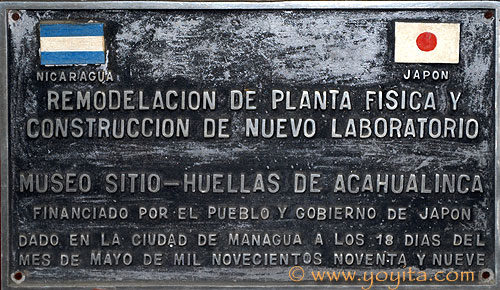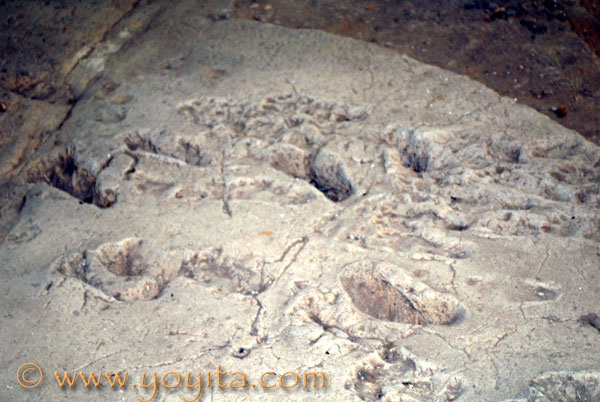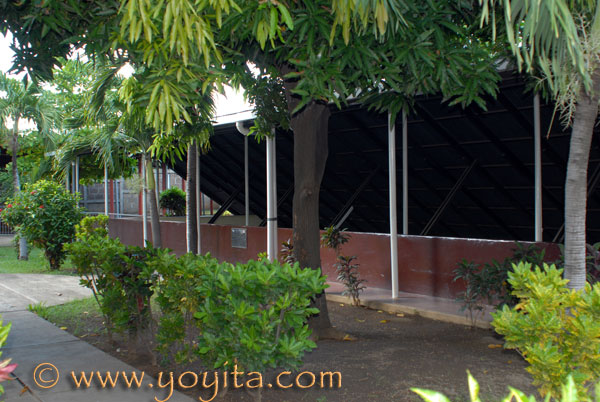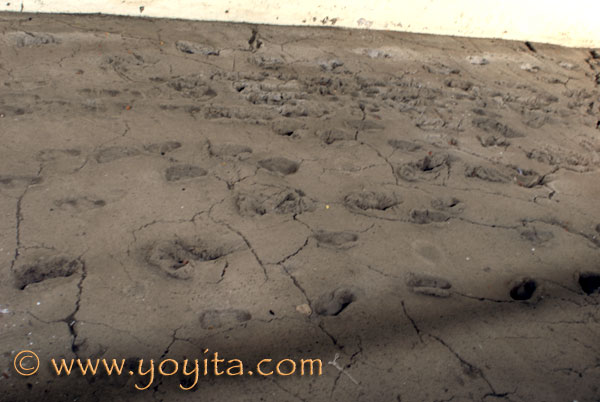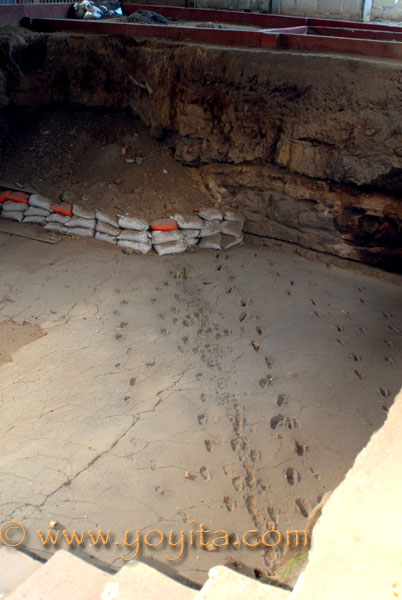Acahualinca Prehistoric footprints
"Huellas de Acahualinca", exist in Managua (the capital city of Nicaragua) near the south shore of Lake Managua (Lago Xolotlán) in a region that was called "El cauce". [1] The tracks are petrified Paleo-Indian human footprints left behind in volcanic ash and mud that solidified 6000 years ago, shortly after the group of up to 15 people passed by.
The Acahualinca tracks are the oldest human footprints on the American continents, and the oldest prehistoric record of human existence in Nicaragua
It is sometimes reported that the people were running to escape from a volcanic explosion, but the distance between the footprints indicates a walking gait.[2] Fossilized footprints of several animals are also present, but they intersect the human footprints and therefore were not traveling with the people.
This modest and recently remodeled museum at the northwest end of the city (tel. 505/266-5774, open 8 a.m.–5 p.m. Mon.–Sat., $2), showcases 6,000-year-old traces of civilization. The prehistoric footprints were found in the last century, four meters below the ground surface. Debate rages as to whether they represent humans fleeing a volcanic eruption or just heading to the lake to fish.
The footprints were discovered accidentally by construction workers in 1874. The American medical doctor and archaeological collector Earl Flint brought the footprints to the attention of the international science community and media in 1884.
The Carnegie Institute of Washington began the first scientific analysis and excavations in 1941 and 1942, and they constructed a museum and a building to protect the footprints.
Work was continued by Joaquín Matilló, Allan Bryan y Jorge Espinoza in the 1960s and 70s. Allan L. Bryan, from the University of Alberta, dated the sand directly under the footprints by radiocarbon dating to 5,945 +/- 145 years.[5] In 1978, Nicaraguan researcher Jorge Espinoza continued the excavation near the termination of the original excavation and uncovered more footprints at a depth of 4 meters.
Specimens of these footprints can be seen at both the Peabody Museum of Archaeology at Harvard University and the United States National Museum.
Paleo-Indians or Paleoamericans were the ancient peoples of Americas who were present at the end of the last Ice Age. The prefix "paleo" comes from the Greek palaios meaning ancient, and refers to the Upper Paleolithic time period. The best known of these peoples were part of the Clovis culture. However, evidence of several pre-Clovis Paleo-Indian cultures also exist.
Paleo-Indians
Paleo-Indians are believed to be the first people to have inhabited a large number of areas in the Americas, though there is now some doubt as to whether they were the first inhabitants of the continent as a whole. The current prevailing theory postulates that Paleo-Indians entered the Americas from Asia via a land bridge (Beringia) connecting eastern Siberia with present-day Alaska when sea levels were significantly lower because of widespread glaciation between about 15,000 to 35,000 years ago. However, evidence suggestive of even earlier human occupation in South America at sites like Monte Verde in Chile (35,000 years), or in North America at site of Topper (50,000 years ago), have generated an alternative theory that Paleo-Indians, or at least some groups of them, may have come from the Pacific Islands or mainland Asia by watercraft.
Paleo-Indians are believed to have been nomadic hunter-gatherers. (They hunted a type of huge sloth, a type of bison and camel.) whose following of animal migrations dictated where they camped. As the glaciers that covered much of North America receded in the warming climate following the most recent glacial maximum, tundra foliage was the main plant growth. Paleo-Indians living in the tundra hunted both large mammals like prehistoric bear, bison, and caribou, as well as smaller mammals like hare and arctic fox. Paleo-Indians also lived in the taiga, forested steppe, semi-arid temperate woodlands, and other ecozones. Paleo-Indians are known to have hunted with both fluted stone-pointed wooden lancing spears and shorter spears thrown using an atlatl; they probably also foraged for edible plants.
Paleo-Indians likely traveled in small groups of approximately 20 or 50 members of an extended family. Archaeological evidence of particular kinds of fluted stone have been uncovered, suggesting trade occurred between such groups.
Archaic stage Indians of the Americas are believed to be direct descendants of Paleo-Indians.
|


